 World Water Week is an annual event organized by the Stockholm International Water Institute (SIWI) that focuses on global water issues, and this year’s theme is “Water and Waste: Reduce and Reuse.” The main event takes place in Stockholm, Sweden where experts, innovators, stakeholders, and young professionals from various sectors around the globe will come together to share ideas, foster relationships, and develop innovative solutions to the world’s most urgent water-related problems. In 2016, over 3,300 individuals and over 330 organizations from 130 countries around the world participated in World Water Week, and the expectation is that 2017 will see at least those numbers. Through this year’s theme, World Water Week is focusing on two targets addressed by the Sustainable Development Goals (SDGs) of the UN’s 2030 Agenda for Sustainable Development including improving water quality and reducing waste by 2030 in order to help achieve sustainable development in a rapidly changing world.
World Water Week is an annual event organized by the Stockholm International Water Institute (SIWI) that focuses on global water issues, and this year’s theme is “Water and Waste: Reduce and Reuse.” The main event takes place in Stockholm, Sweden where experts, innovators, stakeholders, and young professionals from various sectors around the globe will come together to share ideas, foster relationships, and develop innovative solutions to the world’s most urgent water-related problems. In 2016, over 3,300 individuals and over 330 organizations from 130 countries around the world participated in World Water Week, and the expectation is that 2017 will see at least those numbers. Through this year’s theme, World Water Week is focusing on two targets addressed by the Sustainable Development Goals (SDGs) of the UN’s 2030 Agenda for Sustainable Development including improving water quality and reducing waste by 2030 in order to help achieve sustainable development in a rapidly changing world.
Sustainable Development
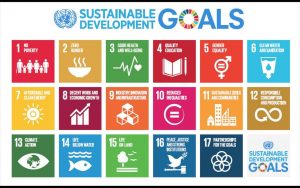 Sustainable development is most commonly defined as development that meets the needs of the present without compromising the ability of future generations to meet their own needs. This means that we cannot meet our current needs at the expense or depletion of our natural resources. Degradation of water quality not only has a negative environmental effect, but also limits the water supply available for human usage. Therefore, we must develop and implement innovative solutions to improving water quality if we are to plan for a sustainable future. Fortunately, there exist easily implementable methodologies for improving water quality throughout the water environment.
Sustainable development is most commonly defined as development that meets the needs of the present without compromising the ability of future generations to meet their own needs. This means that we cannot meet our current needs at the expense or depletion of our natural resources. Degradation of water quality not only has a negative environmental effect, but also limits the water supply available for human usage. Therefore, we must develop and implement innovative solutions to improving water quality if we are to plan for a sustainable future. Fortunately, there exist easily implementable methodologies for improving water quality throughout the water environment.
Utilize mores sustainable water treatment technologies that limit environmental impact
Chemical additives have a significant impact on the health of the environment and its inhabitants. Implementing alternative treatment methodologies such as ozonation, ultraviolet radiation, and biological media helps to minimize the impact that water treatment has on our natural world, and protect our water supply for the future.
Minimize, and eventually eliminate, using drinking quality water for non-potable purposes
Producing drinking quality water utilizes a significant amount of energy, resources, and treatment chemicals, all of which have a negative impact on the environment. Minimizing the use of potable drinking water for other functions, including agricultural, industrial, and non-potable residential, helps to ease the burden placed on resources, the environment, and budgets.
Reduce lost water in municipal distribution systems
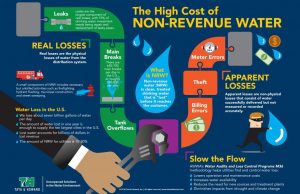 Communities lose millions of gallons of water each year to leaks in the distribution system. While replacing compromised pipes seems like an easy solution, the problem is actually much more complicated. Municipalities do not have sufficient funds to implement large-scale replacement projects; therefore, many compromised pipes remain in use, contributing to distribution system water loss. This loss results in reduced supply, which in turn forces some systems to seek alternate sources at a cost to both the environment and their budgets.
Communities lose millions of gallons of water each year to leaks in the distribution system. While replacing compromised pipes seems like an easy solution, the problem is actually much more complicated. Municipalities do not have sufficient funds to implement large-scale replacement projects; therefore, many compromised pipes remain in use, contributing to distribution system water loss. This loss results in reduced supply, which in turn forces some systems to seek alternate sources at a cost to both the environment and their budgets.
Conducting water audits and pipe condition assessments should be the first step towards efficient, cost-effective pipe replacement programs. Water audits help to identify the causes of water loss while developing strategies to reduce this loss, while pipe condition assessments provide insight into the quality and reliability of water distribution systems. Drinking water infrastructure in the United States, particularly in the northeast, is typically many decades-old, and deteriorating distribution systems can be a significant source of water loss through leakage. Effective water loss control programs reduce the need for facility upgrades and expansions, and in many instances, can reduce the need to find additional sources. In addition, a water loss control program can help protect public health by reducing the number of entry points for disease‐causing pathogens.
Incorporate stormwater best management practices into the built environment
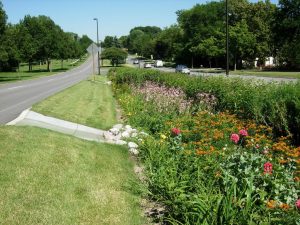
Stormwater management traditionally meant infrastructure such as catch basins. Modern day stormwater management takes a much more holistic approach and maximizes the use of both the natural and engineered landscape. Some examples include onsite catchment and use, reduction of impervious surfaces, stormwater engineering such as bumpouts and tree boxes, and stormwater landscaping such as rain gardens and grassed swales.
Minimize stormwater pollution
Stormwater pollution occurs when precipitation picks up debris, trash, fertilizers, animal waste, pesticides, and improperly discarded chemicals as it moves over the ground. Reducing fertilizer and pesticide usage, cleaning up after pets, and ensuring that trash and chemicals are disposed of properly help to reduce the amount of contamination entering our waterways.
Reuse wastewater
After adequate treatment of wastewater to remove all pollutants and pathogens, it should be reused as much as possible. Treated byproducts can be used for fertilizer and methane fuel, and highly treated water can be reused for aquifer recharging, and even for drinking water.
And of course – educate!
Promote conservation, efficiency, and innovation in water use by incentivizing water conservation, implementing public outreach and education, and encouraging the adoption of methodologies and the usage of products that utilize the latest in water-efficient technologies.
In Conclusion
Achieving sustainable development is only achievable if we focus on the protection of our natural resources at every level. From improving treatment plant efficiency to installing WaterSense fixtures in our homes, creating a truly water wise future requires involvement from governments to individuals on a global level. Since 1991, World Water Week has served as a forum for legislators, scientists, experts, and interested parties to form partnerships and alliances, and to collaboratively find solutions to today’s most urgent water-related issues.

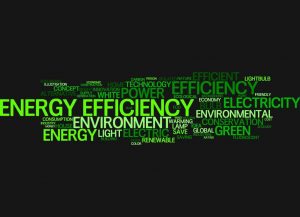 As those in the industry well know, water and wastewater treatment plants use an exorbitant amount of energy. In fact, 30-40% of total municipal energy consumption is due to water and wastewater treatment plants. In addition, energy currently accounts for 40% of drinking water systems’ operational costs and is projected to jump to 60% within the next 15 years. This excessive energy consumption places financial burden on already stressed water and wastewater utilities struggling to keep up with ever-increasing regulations and demand.
As those in the industry well know, water and wastewater treatment plants use an exorbitant amount of energy. In fact, 30-40% of total municipal energy consumption is due to water and wastewater treatment plants. In addition, energy currently accounts for 40% of drinking water systems’ operational costs and is projected to jump to 60% within the next 15 years. This excessive energy consumption places financial burden on already stressed water and wastewater utilities struggling to keep up with ever-increasing regulations and demand.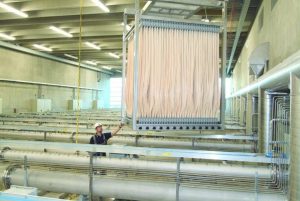
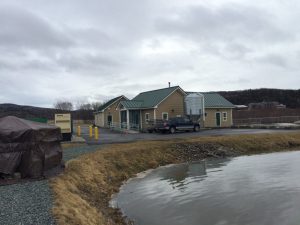
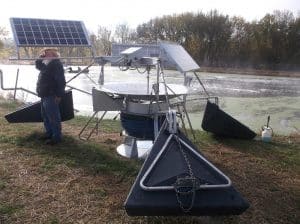
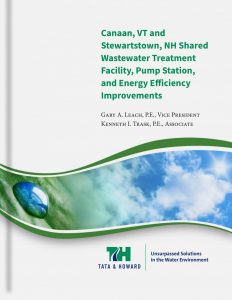
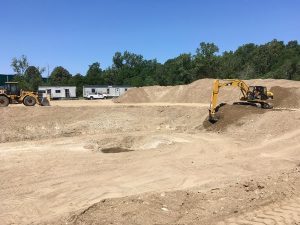
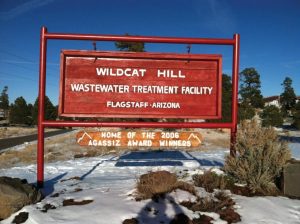 Tata & Howard provides on-call engineering services for water, wastewater, and energy related projects for the City of Flagstaff, Arizona. Several options for replacement of the blowers were evaluated and presented to the City in a report that recommended the installation of appropriately sized turbo blowers and upgrading the controls logic to automate dissolved oxygen controls.
Tata & Howard provides on-call engineering services for water, wastewater, and energy related projects for the City of Flagstaff, Arizona. Several options for replacement of the blowers were evaluated and presented to the City in a report that recommended the installation of appropriately sized turbo blowers and upgrading the controls logic to automate dissolved oxygen controls.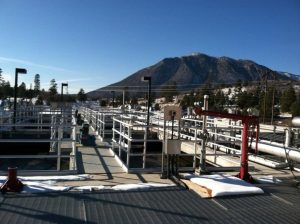
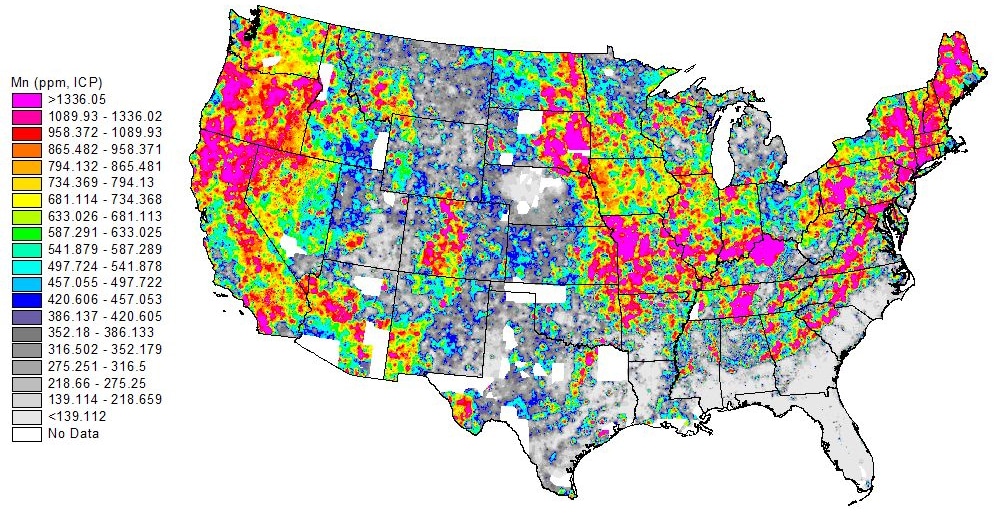
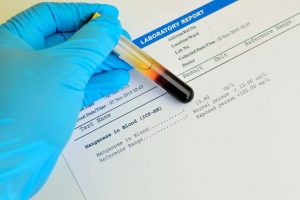 Manganese is an essential nutrient at about 2.5-5.0 mg/day, but overexposure can potentially cause serious health issues. Long term exposure to manganese can cause toxicity to the nervous system and Parkinson’s like symptoms – particularly in children, the elderly, and pregnant mothers. Young children and infants cannot break down manganese in their bodies as effectively as adults, which can cause issues in early brain development. In recent studies, children exposed to high levels of manganese experienced learning difficulties such as ADD, hyperactivity, Pervasive Development Disorder, and memory issues. Another interesting effect of overexposure to manganese is violent behavior. Studies have shown excessive manganese decreases serotonin function and reduces dopamine levels, resulting in social withdrawal, increased depression, and aggression. Studies completed in prisons have concluded manganese toxicity contributes to delinquent behavior, and autopsies of mass murderers often show toxic levels of manganese. While these studies may be concerning, manganese ingested through drinking water is processed by the liver and reduces the risks associated with other forms of manganese exposure, such as inhaling.
Manganese is an essential nutrient at about 2.5-5.0 mg/day, but overexposure can potentially cause serious health issues. Long term exposure to manganese can cause toxicity to the nervous system and Parkinson’s like symptoms – particularly in children, the elderly, and pregnant mothers. Young children and infants cannot break down manganese in their bodies as effectively as adults, which can cause issues in early brain development. In recent studies, children exposed to high levels of manganese experienced learning difficulties such as ADD, hyperactivity, Pervasive Development Disorder, and memory issues. Another interesting effect of overexposure to manganese is violent behavior. Studies have shown excessive manganese decreases serotonin function and reduces dopamine levels, resulting in social withdrawal, increased depression, and aggression. Studies completed in prisons have concluded manganese toxicity contributes to delinquent behavior, and autopsies of mass murderers often show toxic levels of manganese. While these studies may be concerning, manganese ingested through drinking water is processed by the liver and reduces the risks associated with other forms of manganese exposure, such as inhaling.
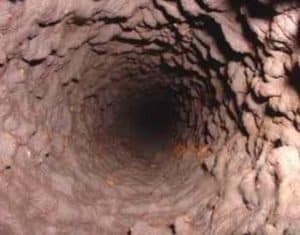 Manganese deposits can build up in pipelines, pressure tanks, water heaters, and water softeners, reducing the available quantity of the water supply and pressure in the system. Manganese accumulations can become expensive for utilities when water supply or water softening equipment must be replaced. Also, energy costs can become a burden for utilities when pumping water through constricted pipes or heating water with heating rods coated with manganese deposits. Managing safe levels of manganese in drinking water is an important step in preserving valuable assets in a distribution system. The benefits associated with treating manganese greatly outweigh the long-term repair and rehabilitation costs utilities may face with high levels of manganese. To adequately manage safe levels of manganese, proper water treatment is paramount.
Manganese deposits can build up in pipelines, pressure tanks, water heaters, and water softeners, reducing the available quantity of the water supply and pressure in the system. Manganese accumulations can become expensive for utilities when water supply or water softening equipment must be replaced. Also, energy costs can become a burden for utilities when pumping water through constricted pipes or heating water with heating rods coated with manganese deposits. Managing safe levels of manganese in drinking water is an important step in preserving valuable assets in a distribution system. The benefits associated with treating manganese greatly outweigh the long-term repair and rehabilitation costs utilities may face with high levels of manganese. To adequately manage safe levels of manganese, proper water treatment is paramount.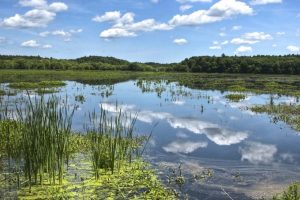 For low concentrations of manganese, 0.3 mg/L or less, sequestering utilizing phosphate compounds is a simple, effective, and inexpensive solution. When added to water, phosphate compounds surround minerals and keep them in solution. When these compounds are put into the water system, they stabilize and disperse dissolved manganese. As a result, the manganese is not available to react with oxygen to create issues with the color, taste, or odor of drinking water. The phosphate compounds must be introduced into the water at a point where the manganese is still dissolved to maintain water clarity. This treatment process should take place before the pressure tank and as close to the well discharge point as possible. Phosphate treatment does come with a bit of risk due to the instability of most phosphate compounds at higher temperatures. If phosphate-treated water is boiled or heated, such as in a water heater, the compounds have the potential to break down and release manganese that could react with oxygen and precipitate. Also, phosphates from any source contribute to excess nutrient content in surface water.
For low concentrations of manganese, 0.3 mg/L or less, sequestering utilizing phosphate compounds is a simple, effective, and inexpensive solution. When added to water, phosphate compounds surround minerals and keep them in solution. When these compounds are put into the water system, they stabilize and disperse dissolved manganese. As a result, the manganese is not available to react with oxygen to create issues with the color, taste, or odor of drinking water. The phosphate compounds must be introduced into the water at a point where the manganese is still dissolved to maintain water clarity. This treatment process should take place before the pressure tank and as close to the well discharge point as possible. Phosphate treatment does come with a bit of risk due to the instability of most phosphate compounds at higher temperatures. If phosphate-treated water is boiled or heated, such as in a water heater, the compounds have the potential to break down and release manganese that could react with oxygen and precipitate. Also, phosphates from any source contribute to excess nutrient content in surface water.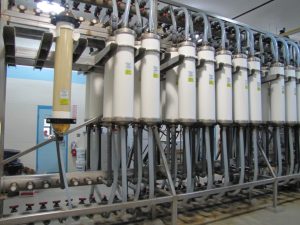
 Ryan Neyland, P.E. Project Manager, has over 11 years of concentrated water treatment experience including all phases of planning, design, and construction services, as well as pump station rehabilitation and SCADA experience. He holds a BS in Civil Engineering from Worcester Polytechnic Institute.
Ryan Neyland, P.E. Project Manager, has over 11 years of concentrated water treatment experience including all phases of planning, design, and construction services, as well as pump station rehabilitation and SCADA experience. He holds a BS in Civil Engineering from Worcester Polytechnic Institute. It is widely known how important water is to our lives and the world we live in. Our body and planet is comprised of about 70% water – making it seem like it is easily accessible and plentiful. However, when you rule out our oceans and ice caps, less than 1% of all the water on Earth is drinkable. Of that less than 1%, groundwater only accounts for 0.28% of fresh water around the globe. Safe drinking water is a privilege we often take for granted while we brush our teeth or drink a glass of water in the morning. While we are giving thanks to our family, friends, and food during Thanksgiving, we should also give big thanks for our clean drinking water and the people who make it happen.
It is widely known how important water is to our lives and the world we live in. Our body and planet is comprised of about 70% water – making it seem like it is easily accessible and plentiful. However, when you rule out our oceans and ice caps, less than 1% of all the water on Earth is drinkable. Of that less than 1%, groundwater only accounts for 0.28% of fresh water around the globe. Safe drinking water is a privilege we often take for granted while we brush our teeth or drink a glass of water in the morning. While we are giving thanks to our family, friends, and food during Thanksgiving, we should also give big thanks for our clean drinking water and the people who make it happen.
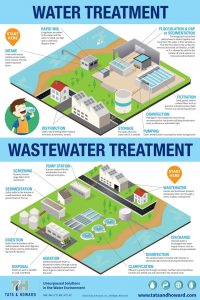
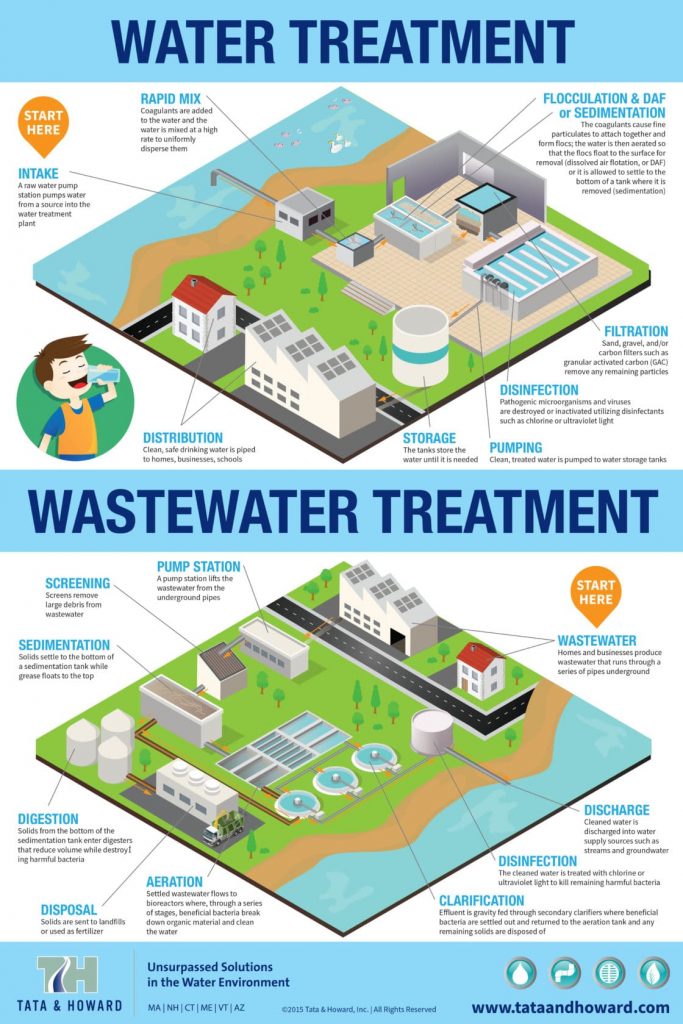

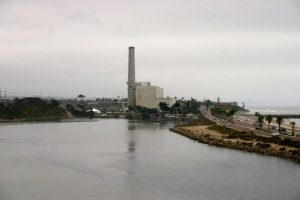
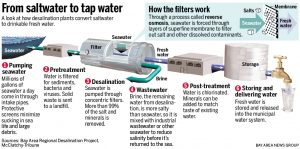

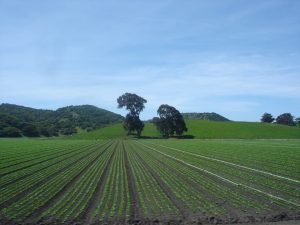
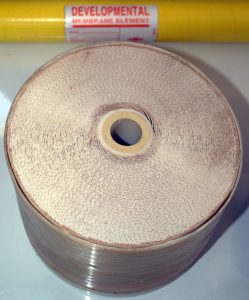
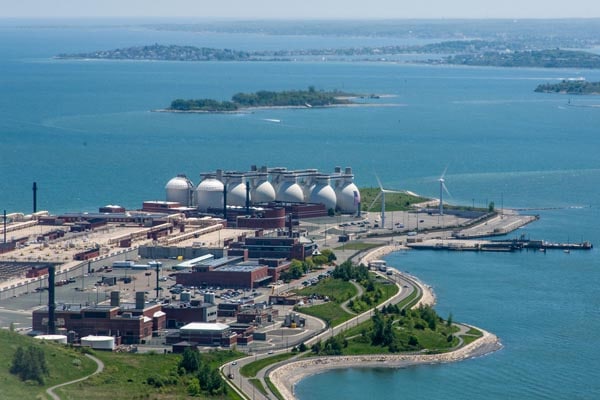
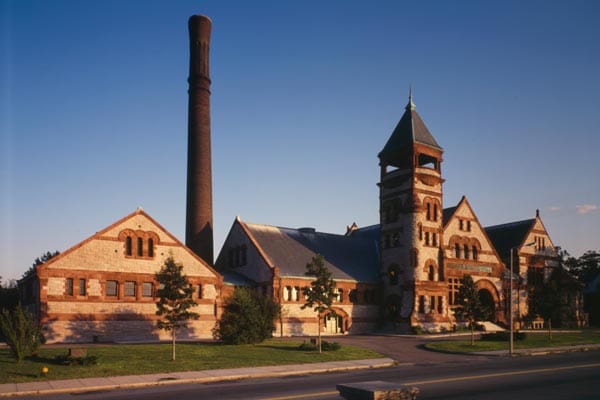
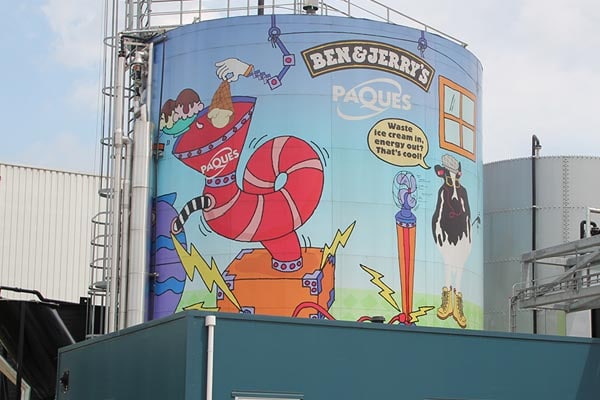

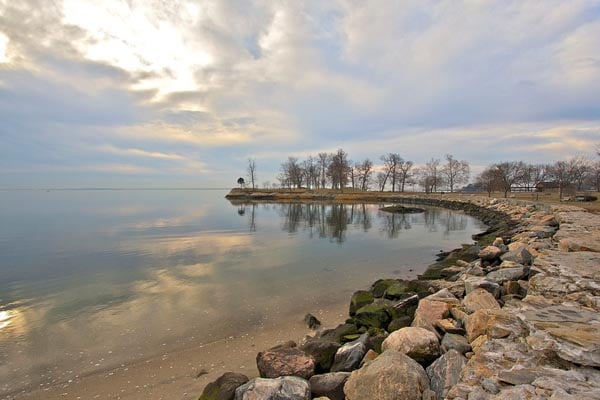
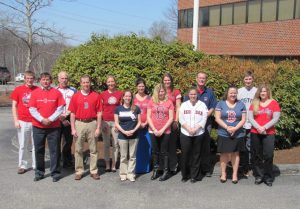
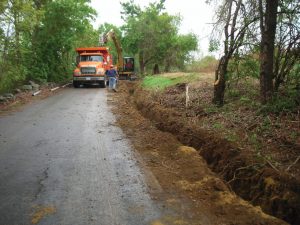 Abstract: The Town of Spencer, Massachusetts received an Administration Consent Order (ACO) from the Massachusetts Department of Environmental Protection (MassDEP) mandating changes to their water treatment process, and the separation of the Town’s water distribution system into two pressure zones. This paper discusses the completion of this project in three phases. The System Study evaluated the conceptual design criteria needed for the two pressure zones and selection of tank sites. The Design Phase highlights permitting and design challenges encountered, and the Construction Phase discusses the overall final product, construction challenges and project successes.
Abstract: The Town of Spencer, Massachusetts received an Administration Consent Order (ACO) from the Massachusetts Department of Environmental Protection (MassDEP) mandating changes to their water treatment process, and the separation of the Town’s water distribution system into two pressure zones. This paper discusses the completion of this project in three phases. The System Study evaluated the conceptual design criteria needed for the two pressure zones and selection of tank sites. The Design Phase highlights permitting and design challenges encountered, and the Construction Phase discusses the overall final product, construction challenges and project successes.